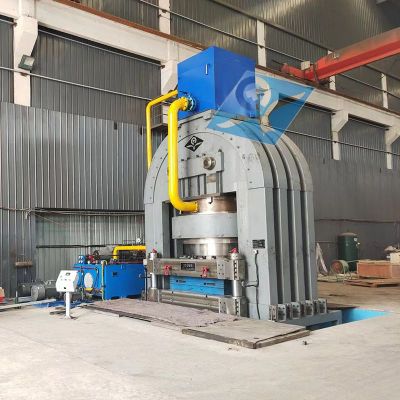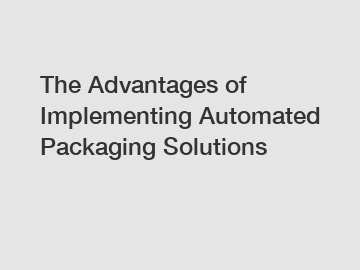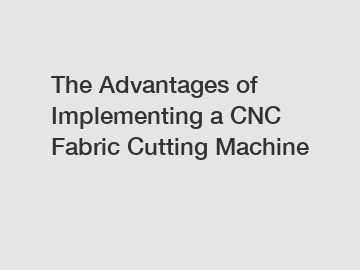What is the basic principle of hydraulic press?
A hydraulic press operates on the fundamental principle of Pascal's law, a concept that revolves around the transmission of pressure in an enclosed fluid. This law states that any change in pressure applied to a confined fluid is transmitted undiminished to all parts of the fluid and to the walls of its container. The ingenious application of this principle in hydraulic presses allows for the amplification of force, making them invaluable in various industrial processes.
The primary components of a hydraulic press include two cylinders of different sizes – the master cylinder and the slave cylinder – connected by a pipe filled with hydraulic fluid, typically oil. Each cylinder contains a piston. The master cylinder is where the force is initially applied, and the goal is to transmit this force to the slave cylinder, achieving a desired mechanical outcome.
When force is exerted on the piston in the master cylinder, it leads to an increase in pressure within the hydraulic fluid. Pascal's law comes into play here, ensuring that the elevated pressure is evenly distributed throughout the fluid. Consequently, the piston in the slave cylinder experiences the same pressure and is compelled to move, generating a force proportional to the applied force on the master cylinder.
This ability to magnify force is the hallmark of hydraulic presses, and it finds application in a plethora of industrial processes that require significant pressure for tasks such as metal forming, plastic molding, and more.
The operational sequence of a hydraulic press involves several key steps. As force is applied to the master cylinder's piston, the pressure in the hydraulic fluid rises. This pressure is transmitted to the slave cylinder, prompting its piston to move. The movement of the slave piston can then be harnessed for specific applications, such as bending, shaping, or compressing materials.
The design of hydraulic press machine can vary based on the intended application. For instance, some hydraulic presses feature a simple hand-operated pump for manual force application, while others incorporate electric or hydraulic motors for more automated and controlled processes. The versatility of hydraulic presses makes them suitable for a wide range of industries, from manufacturing and automotive to aerospace and beyond.

One of the primary advantages of hydraulic presses is their capability to generate immense force with relatively modest input force. This is particularly crucial in tasks where substantial pressure is required, such as in metalworking processes. The ability to exert high forces uniformly is also advantageous in tasks that involve shaping materials, as it ensures precision and consistency.
In metal forming applications, hydraulic presses play a pivotal role in processes like stamping, forging, and deep drawing. In stamping, hydraulic presses are used to cut or shape metal sheets into specific forms. The force applied by the press enables the creation of intricate and precise patterns, making it a preferred method for mass production of components in industries like automotive manufacturing.
Forging, another crucial application, involves shaping metal through the application of compressive force. Hydraulic presses are instrumental in hot and cold forging processes, where metal is either heated or used at room temperature, respectively. The ability to exert controlled and substantial force makes hydraulic presses indispensable for achieving the desired shapes and properties in forged metal products.
Additional reading:Key Questions to Ask When Purchasing an Automatic Fiber Laser Welding Machine
Ultimate Guide to Hot Dip Galvanizing Equipment in Myanmar
Where to Find Reliable Cardboard Baler Machine Exporters?
Top Feed Companies: 144 global producers rank in 2022
How Does Automatic Coffee Brewing System Work?
How Do Different Types of Coffee Makers Work?
How Does Rack Plating Equipment for Industrial Applications Work?
Deep drawing, commonly employed in the production of cylindrical or box-shaped metal components, is yet another area where hydraulic presses excel. By applying force to a metal sheet, a hydraulic press can form it into complex shapes, meeting the demands of various industries, including appliance manufacturing and container production.
In plastic molding processes, hydraulic presses are extensively used for tasks like injection molding and compression molding. Injection molding involves injecting molten plastic into a mold cavity, where it solidifies to form the desired product. Hydraulic presses play a critical role in applying the pressure needed to fill the mold and ensure the proper shaping of the plastic material.
Compression molding, on the other hand, is a process where a preheated material is placed in a mold, and pressure is applied to compress and shape it. Hydraulic presses are integral to achieving the required compression force, resulting in the production of durable and precisely molded plastic products.
Aerospace manufacturing is another sector that benefits from the application of hydraulic presses. The production of aircraft components often involves forming and shaping materials like aluminum and titanium. Hydraulic presses provide the necessary force and precision to shape these materials into the intricate and specialized components required for aircraft structures.
In the automotive industry, metal hydraulic presses are extensively used in various manufacturing processes, including the production of body panels, chassis components, and other metal parts. The ability to apply controlled and substantial force is crucial for achieving the desired shapes, strength, and durability of automotive components.
Beyond manufacturing, hydraulic presses find utility in maintenance and repair tasks. Hydraulic presses equipped with specialized tooling can be employed to straighten or bend metal components, assemble or disassemble parts, and perform other tasks in industries ranging from construction to shipbuilding.
It's worth noting that the efficiency of hydraulic presses also stems from their ability to provide precise control over the applied force. This control is essential in ensuring the safety and accuracy of the manufacturing processes. Advanced hydraulic press systems incorporate features such as pressure sensors, feedback mechanisms, and programmable logic controllers (PLCs) to achieve precise control and automation.
Despite their numerous advantages, hydraulic presses also present some challenges. The hydraulic fluid used in the system requires regular maintenance to ensure optimal performance and prevent issues such as fluid leakage or contamination. Additionally, the overall design and operation of hydraulic presses must adhere to safety standards to prevent accidents and ensure the well-being of operators.
In conclusion, the basic principle of a hydraulic press, grounded in Pascal's law, forms the foundation for its remarkable ability to amplify force. This principle is harnessed across various industries for shaping, forming, and molding materials with precision and efficiency. The versatility, power, and controlled force application of hydraulic presses make them indispensable tools in modern manufacturing and engineering processes.
The Advantages of Implementing Plating Waste Treatment
How to Choose a Plating Machine for Bangladesh?
Key Considerations to Keep in Mind When Selecting a Solar Panel System
Key Questions to Ask When Purchasing a High-Speed 3D Printer
5 Things to Know Before Buying hydraulic oil extraction machine
How to Choose a Laser Tube Cutting Machine?
Maximize Precision with a Laser Tube Cutting Machine











